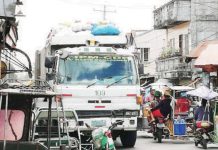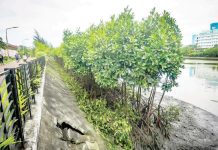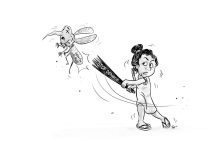[av_one_full first min_height=” vertical_alignment=” space=” custom_margin=” margin=’0px’ padding=’0px’ border=” border_color=” radius=’0px’ background_color=” src=” background_position=’top left’ background_repeat=’no-repeat’ animation=”]
[av_heading heading=’FAITH, HOPE & CHARITY ‘ tag=’h3′ style=’blockquote modern-quote’ size=” subheading_active=’subheading_below’ subheading_size=’15’ padding=’10’ color=” custom_font=”]
BY IKE SEÑERES
[/av_heading]
[av_textblock size=” font_color=” color=”]
Drilling down big data
BIG DATA that is not analyzed is like ore that is not processed into a diamond.
Collecting Big Data without a plan or purpose is like buying construction materials for a project that neither a plan nor a design.
Big Data is not supposed to have its own purpose. Its purpose should be aligned with everything else that constructively works with it, such as the internet cloud, the Internet of Things (IOT) and data analytics.
As a matter of fact, it is said that IOT is going to be the biggest contributor or collector of entries to Big Data. Not only that, data analytics is also popularly known as Big Data Analytics. Over and above all these, it is difficult to imagine the expandability of Big Data without the internet cloud.
It goes without saying therefore that private companies and government agencies should have well defined and clear cut Big Data strategies, instead of just leaving this to chance or circumstance.
Of course, it could not be avoided that the ownership of old data is already a pre-existing condition, but nonetheless the maintenance of old data has to be harmonized with the collection of new data, so that as an end result, old and new data will become part of Big Data.
From another perspective, we could look at this as a supply chain wherein data collection is the materials stage, data analytics is the production stage and decision making is the distribution stage.
In much the same way that we say that Big Data should not have a life of its own, we could also say that the overall purpose of collecting and analyzing Big Data should be completely aligned with what private companies and government agencies are supposed to be doing, and where they are supposed to be going.
At the risk of sounding too simplistic, I would still say there is nowhere else that we should be doing except to the future, and having said that, I will add to say that there is nothing else that we should be doing except to prepare for the future.
As a matter of fact, the combination of the internet cloud, the Internet of Things (IOT), data analytics and Big Data already gives us a glimpse of what to expect in the future, near or far.
It could be said in a manner of speaking that Electronic Data Processing (EDP) is the earlier form of both Big Data and data analytics. But since EDP is clearly a term that was prevalent in the mainframe era, it could also be said that data mining might have been its latter form in the client-server era.
Although it could be said that any private company or government agency could just go into Big Data and data analytics at any time now as they wish, it would be reasonable to say that the organizations that have had actual experience in EDP and data mining would have an edge as they upgrade into Big Data and data analytics.
Long before computers came along, the management of private companies and government agencies have been setting objectives and have been making decisions. No matter how advanced computer technologies are, these are really just tools for objective setting and decision making.
That said, it could be further said that managers who are good in objective setting and decision making are expected to know best what to do with Big Data and data analytics. Conversely, it could be said that managers who are not good in objective setting and decision making would not even know what to do with Big Data and data analytics, much less appreciate it.
So many ideas have been floated about what to do with the traffic problem, but as far as I know, no one has said anything yet about using Big Data. Allow me therefore to use that as an example, so that we would understand what it means to drill down Big Data. It is not a new idea to put sensors in roads and highways in order to measure the volume of traffic that passes through, but it is easier and cheaper to do that now, because the costs have gone down.
The data from these motion sensors could be transmitted directly to servers that are hosting the Big Data. After these data sets are analyzed, we would know at what place in the Metropolis the traffic is heaviest at any time, and because of that managers could make decisions where and how to direct the flow.
Aside from new data that could be gathered by the motion sensors in the roads and highways, there are also existing old data sets that could be gathered and analyzed, in order to arrive at more precise objective setting and decision making. Examples of these are data from waze.com and maps.google.com.ph where we could get traffic and navigation maps. We could also complement the data from these websites with our own data sets from the Metropolitan Manila Development Authority (MMDA) and the National Mapping and Resource Information Agency (NAMRIA).
Add to that the data from the Philippine Atmospheric, Geophysical and Astronomical Services Administration (Pagasa) and we could already have a deep source of data sets to analyze, in order to plan the flow of traffic in Metro Manila./PN
[/av_textblock]
[/av_one_full]







